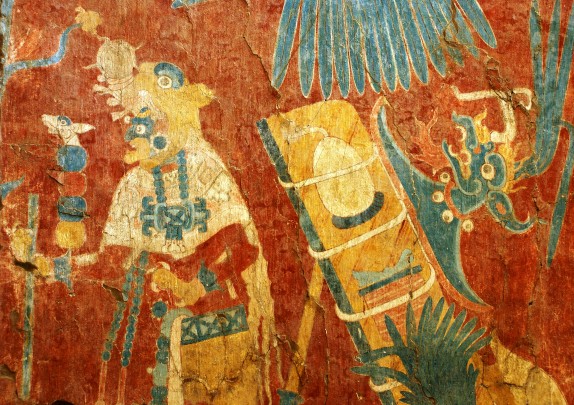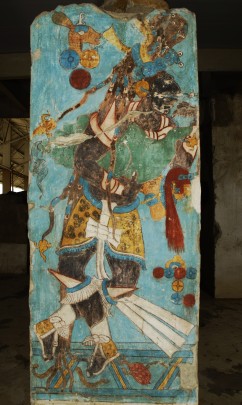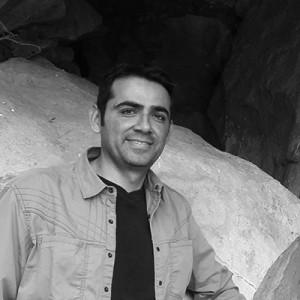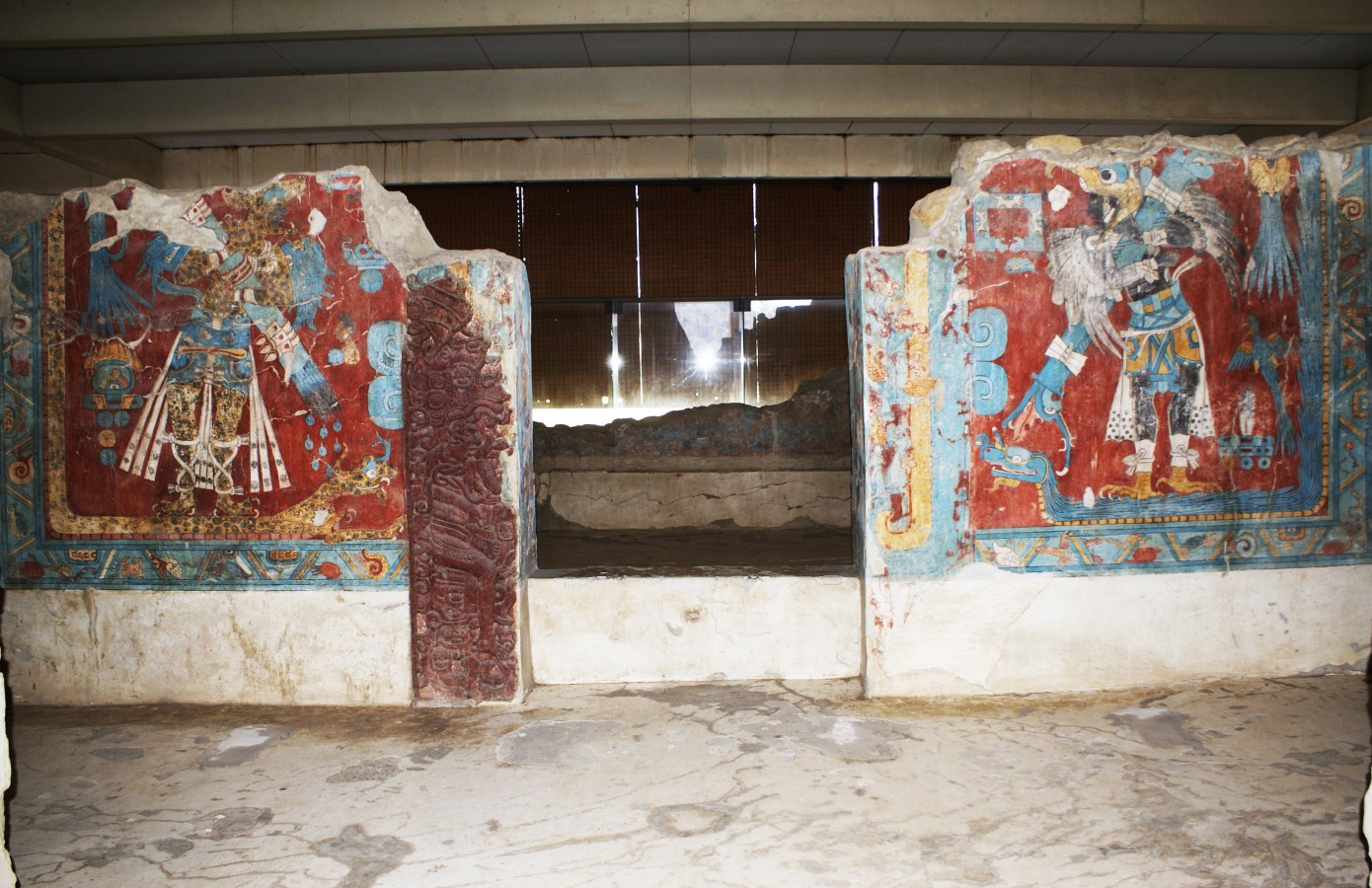In the Epiclassic (650-900 AD), the elites of Cacaxtla-Xochitecatl were constantly seeking to manipulate the perception of the populace and other contemporary societies with regard to their political and military power.
Cacaxtla emerged as a powerful regional center around 650 AD, at a time of military conflict and political instability brought about by the decline of Teotihuacan and Cholula in the Puebla-Tlaxcala valley. It managed to maintain its dominance of the region for 250 years. The magnificence and complexity of the state apparatus have been revealed in the course of several site excavations.
Possibly the key attraction is a series of mural paintings which have been successfully preserved on the Gran Basamento (Great Plinth). This building is a type of acropolis, consisting of several buildings of different periods built one on top of another, with principally administrative, ceremonial and religious functions. These mural paintings are proof of the way in which dominant groups sought to amplify the hierarchy in relation to the rest of the population, and at the same time to show off their military prowess and political power to other contemporary societies. There could not be a better means than through imagery. Among the most interesting murals are those in the Red Temple, the Battle Mural, Building A and the Temple of Venus. If we look closely we can see that images fall into the categories of wars, sacrifices, piety, world view and power; all in the name of buttressing the power of the elite and shifting the viewer’s perspective.
We can imagine how people might have viewed this display of power as they passed through these spaces embellished with wall paintings. They must certainly have recognized at least one part of the narrative proclaimed by the elite in these paintings. This raises a question over the veracity of the depictions in the mural paintings. There probably were elements of truth, but other aspects of the narrative were exaggerated or glorified, such as to exalt the rulers to a supernatural status. This had been very common in the Mesoamerican martial tradition since the earliest times, and we often see it in sites of different regions such as Teotihuacan, Monte Alban, Bonampak and Tajin. It is certain that the elite was constantly trying to promote an idealized view of the mundane world, a reality that they, as the leaders of the state, sought to attain. The vision they articulated was considered superior in their day, but it was very far from reality.
On many occasions the mural paintings and other representations, such as clay figurines, serve to communicate the artistic eclecticism of the societies. They also provide information which helps to trace influences on the ideas of the artists, making it possible to reconstruct the patterns of interactions with distant lands. We know that in the Epiclassic the architecture and mural paintings of Cacaxtla were mainly influenced by the ideas and techniques of the lowland Maya, while iconographic traits were also drawn from the Teotihuacan tradition. Other expressions, such as figurines for offerings, adopted and blended the iconography of several different regions. On the other hand the art of daily life, such as the pottery produced by the non-elite segment of society, drew on a material culture based on a centuries-old tradition within the region.
In summary, the art of Mesoamerica was one of the most influential means of influencing the opinions of the people. When visiting the Gran Basamento of Cacaxtla, it is worth looking carefully at the message the dominant groups wished to promulgate through their mural paintings. This raises an important question about the influence that these paintings actually had on how the people and rival societies thought. There is no evidence about this, but we may speculate as we gaze in wonder at these invaluable works of art today. This cultural heritage is conserved so that future generations may continue to study and enjoy it.










